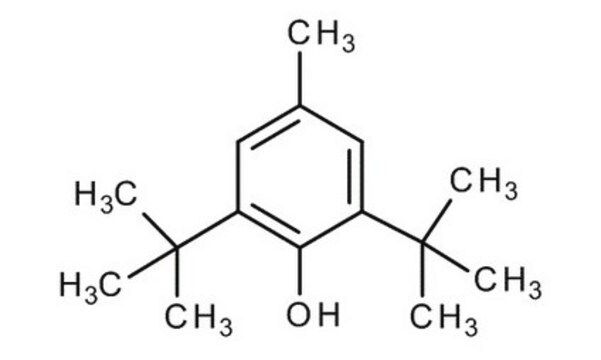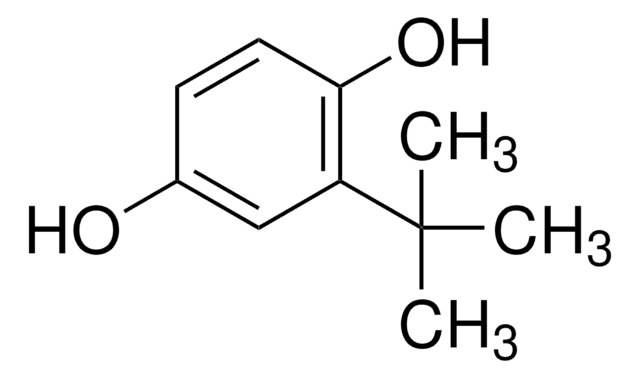1082708
USP
2,6-Di-tert-butyl-4-methylphenol
United States Pharmacopeia (USP) Reference Standard
Synonyme(s) :
Butylhydroxytoluène, Hydroxytoluène butylé
About This Item
Produits recommandés
Qualité
pharmaceutical primary standard
Densité de vapeur
7.6 (vs air)
Pression de vapeur
<0.01 mmHg ( 20 °C)
Famille d'API
butylated hydroxytoluene
Température d'inflammation spontanée
878 °F
Fabricant/nom de marque
USP
Point d'ébullition
265 °C (lit.)
Pf
69-73 °C (lit.)
Application(s)
pharmaceutical (small molecule)
Format
neat
Chaîne SMILES
Cc1cc(c(O)c(c1)C(C)(C)C)C(C)(C)C
InChI
1S/C15H24O/c1-10-8-11(14(2,3)4)13(16)12(9-10)15(5,6)7/h8-9,16H,1-7H3
Clé InChI
NLZUEZXRPGMBCV-UHFFFAOYSA-N
Vous recherchez des produits similaires ? Visite Guide de comparaison des produits
Description générale
Application
- Dutasteride and Tamsulosin Hydrochloride Capsules
Remarque sur l'analyse
Autres remarques
Produit(s) apparenté(s)
Mention d'avertissement
Warning
Mentions de danger
Conseils de prudence
Classification des risques
Aquatic Acute 1 - Aquatic Chronic 1
Code de la classe de stockage
11 - Combustible Solids
Classe de danger pour l'eau (WGK)
WGK 2
Point d'éclair (°F)
260.6 °F - open cup
Point d'éclair (°C)
127 °C - open cup
Certificats d'analyse (COA)
Recherchez un Certificats d'analyse (COA) en saisissant le numéro de lot du produit. Les numéros de lot figurent sur l'étiquette du produit après les mots "Lot" ou "Batch".
Déjà en possession de ce produit ?
Retrouvez la documentation relative aux produits que vous avez récemment achetés dans la Bibliothèque de documents.
Les clients ont également consulté
Notre équipe de scientifiques dispose d'une expérience dans tous les secteurs de la recherche, notamment en sciences de la vie, science des matériaux, synthèse chimique, chromatographie, analyse et dans de nombreux autres domaines..
Contacter notre Service technique







